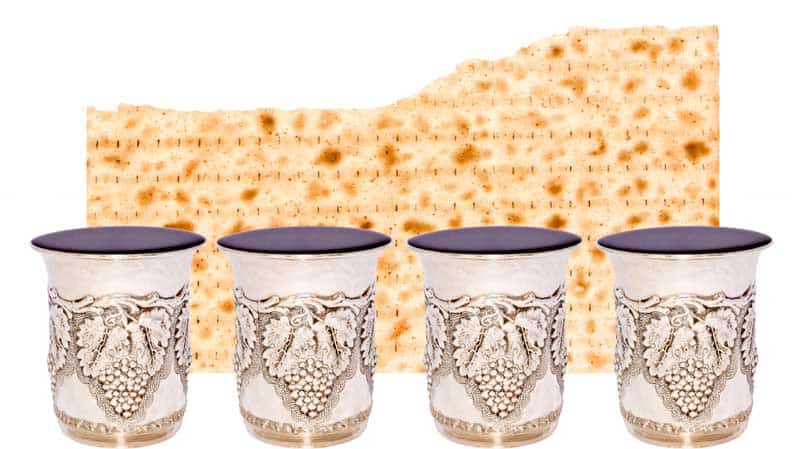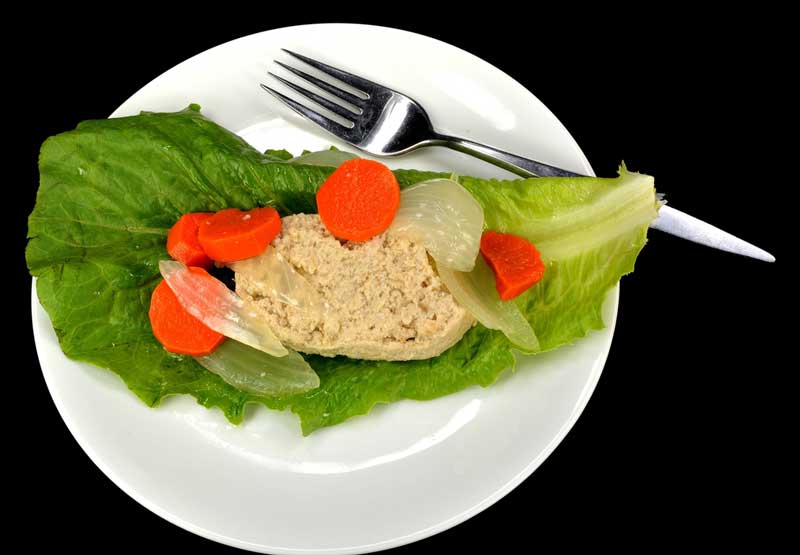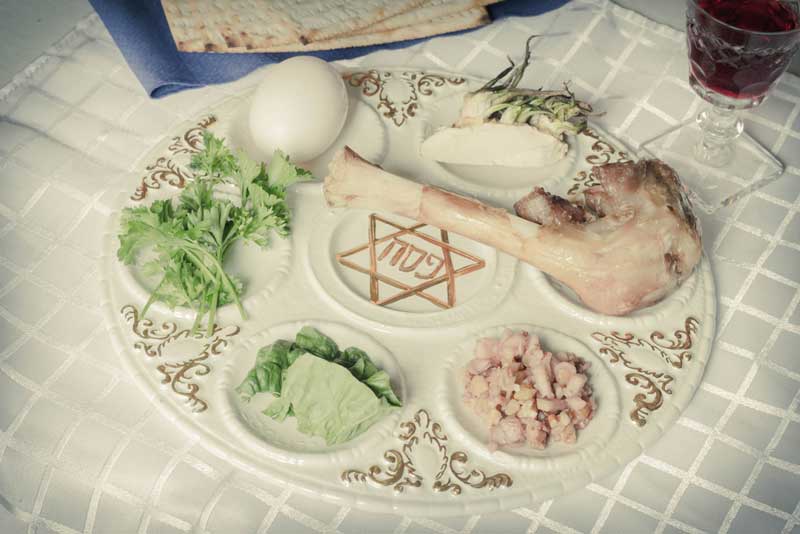Kosher for Passover Keto: How To Stay In Keto During Passover

What makes this seder different from all other seders? Answer: it’s a Keto Passover Seder.
by Rabbi Harlan Kilstein

With all of the wine, grape juice, matzah and other carbs among the obligatory seder foods, the traditional Passover seder may not seem a likely feast to comply with Keto Passover standards, but you can not only survive but thrive at the seder and still stay pretty faithful to your diet.

Whether you have been following the ketogenic diet for years or have just started, Passover may seem like a complicated time to be on a restricted diet. Given the fact that this holiday is associated with a shift in the food routine, Passover may provide a challenge to people on all kinds of restrictive diets, but most of the holiday can be ketogenic friendly.
As long as you confine yourself to a bare minimum of matzah, you can enjoy the proteins and fats you love during the regular meals.
However, the Keto Passover Seder can provide a few obstacles, given the carbohydrate content of some of the traditional foods, but there are ways to keep carbs to a minimum and enjoy your seder.

As everyone who follows a ketogenic diet knows, the goal is to increase the consumption of protein and especially fats and to reduce the total carbs in your diet.
Fats are also welcome on the ketogenic diet, which makes this a delicious as well as a healthy way to lose weight and feel and look your best. The low-carb concept has been around for years starting with the Atkins diet and other plans, but the ketogenic approach is different.

The purpose of the diet is to get the body in a state of ketosis when there is a low amount of glucose in the blood stream. When this happens, the body kicks into survival mode and starts burning fat. This is how the ketogenic diet can make one feel more energized and can burn calories. Ketogenics is good for people who have a variety of conditions, including Type 2 diabetes.
There is no reason to forego the benefits you experience from a ketogenic diet all year round because of Passover. Instead, you can learn to make the most out of the holiday while still following the diet.

The most formidable challenge to the Keto Passover is the seder. For those who follow the traditional requirements of this festive meal, it is important to eat a certain amount of matzoh, or flat bread designed for Passover and to drink four cups of wine.

People who intend to follow the law to the letter and still stick to the ketogenic diet can make a few preparations to make the experience easier. The Passover seder is also an issue for diabetics who cannot tolerate a large amount of sweet wine or juice and want to avoid overloading on carbs. The key is to eat and drink as few carbs as possible and there are rabbinic opinions that allow consuming the bare minimum for those with health and dietary needs. We consider health and weight loss to be life-saving issues.

First of all, there is no need to “prove yourself” when it comes to Keto Passover. Even those who follow the laws and traditions strictly know that the sages advised against causing being rigid in observance if it is going to result in illness or even discomfort. If you are used to your ketogenic diet or are diabetic, eating a lot of matzoh and drinking huge amounts of wine or grape juice can be a shock to the system. It would surely throw you out of ketosis, possibly for weeks. Remember that the purpose of the festive meal is enjoyment and there is no need to do something that will be counterproductive to your health.

When discussing the required consumption of matzah and wine at the seder, the terms “kazayit” and “revi’it” are used. Kazayit is from the Hebrew and means, like an olive, indicating that one eats the amount of matzah that is the equivalent of an olive. This sounds simple enough, but this measurement is not really equivalent to a modern olive.

For a person NOT on Keto, the minimum one-half of a square matzah and one-third of a large, round matzah. This may not seem like such a big deal, until one considers that during the seder, one is required to eat a kazayit of matzah three times, according to the Haggadah, which is a kind of seder manual.
Some notes on Matzah – if you plan on keeping a Halachik seder (according to the rules) the Gluten Free “Matzah” they sell in stores isn’t really Matzah. It’s not one of the five grains. You do not fulfill your obligation to eat matzah with it. Many people on Keto are also allergic to gluten. That means you can not use regular matzah that is made from wheat.
I use Shmura Matzah that is made from Oats. I order it from the Lakewood Matzah bakery.
 If eating a whole matzah or more in the seder makes you feel concerned about your getting out of the ketogenic mode or if you want to keep your carb consumption low because of diabetes, you can eat lower than the stated minimum of the amount.
If eating a whole matzah or more in the seder makes you feel concerned about your getting out of the ketogenic mode or if you want to keep your carb consumption low because of diabetes, you can eat lower than the stated minimum of the amount.

According to a number of rabbis at the Star-K, those with health issues or with dietary restrictions can eat half of the general requirement for eating matzah. This means at three periods during the seder—achilat matzah, korech and afikomen, you can eat just ¼ of a flat matzah or 1/6 of a round matzah. If you make sure to eat plenty of proteins and fats during the regular meal, you can more than make up for this modest carb consumption.

To get an idea of how much matzah you are eating, one machine-made square matzah contains 23-27 grams of carbs and one round matzah has about 35 grams of carbs. This is way more than you should eat in any given day.
If you eat the minimum amount, you may need to consume close to 20 grams of carbs worth of matzah. Keep in mind, however, that you don’t need to eat matzah the rest of the holiday if you choose not to and want to keep your carb consumption to a minimum.
Wine is measured in revi’it, which literally means a fourth. The wine should be drunk down preferably in one gulp or under a minute. Grape juice is generally too high in carbs (a 4 oz serving of Kedem grape juice has around 19 carbs). It may be better for those with diabetes or who are on a ketogenic diet to opt for a dry, red wine, which has fewer carbs than the regular sweet variety or than grape juice.
The following is the carb count for a 5 oz glass of wine.
For red wines

- Cabernet Sauvignon 120 calories, 3.8 carbs
- Pinot Noir: 121 calories, 3.4 carbs
- Merlot: 120 calories, 3.7 carbs
For white wines

- Pinot Grigio: 122 calories, 3.2 carbs
- Sauvignon Blanc: 122 calories, 2.7 carbs
- Chardonnay: 118 calories, 3.7 carbs
- Riesling: 118 calories, 5.5 carbs
- Champagne 96 calories, 1.5 carbs

However, it may be more difficult to down a small glass of dry red wine quickly, but you are allowed to dilute the wine, provided that the mixture is still 4% alcohol. The minimum requirement to drink per cup of wine is 1.9 fluid oz. You are allowed to dilute 1/3 wine with 2/3 water provided that it is still at the level of 4% alcohol. This means that you will drink four cups of a fluid that is only 0.7 oz wine, and you will end up consuming 2.8 oz of wine by the end of the seder. Choosing a dry wine means that you may consume less than 2 grams of carbs for your total wine consumption. Diabetics should keep in mind that the wine is drunk on an empty stomach, and this may cause a fluctuation of blood sugar. Talk to your doctor about this concern related to the timing of your taking insulin. The resultant amount of diluted wine you consume may not cause problems if you are taking oral medications that should not be combined with alcohol, but ask your doctor to be on the safe side.

Of course, Passover is not just about the seder but includes all of the other meals during the week. For these meals, you can eat pretty much the way you like, but it is a custom to eat a bit fancier and to indulge a bit more on Passover. In a way, Passover eating, at least after the seder, fits in well with the ketogenic diet. It is hard to image a more hostile attitude to carbohydrates than the Passover cleaning before the holiday begins. People are frantic to rid every corner of their dwellings of crumbs produced by bread, cakes, cookies—the kind of things that are avoided on a ketogenic diet.
In fact, Passover is the one time of the year you can feel in good company since others are avoiding bread and cake as well. However, this doesn’t mean having a false sense of security that the meals you will be enjoying in other people’s homes during Passover will be low-carb.

Instead of eating grains, many people make up for it by eating plenty of starchy vegetables, such as potatoes or using potato starch in their cooking. Many people a huge amount of matzah during Pesach and prepare food with matzah such as matzah brei or kneidlach, matzah dumplings. You can avoid these foods and still enjoy Passover to the hilt with high-protein favorites.

You can eat plenty of cheese and meat on Passover, but if you observe traditional Jewish dietary laws, you may not eat them together. When planning your ketogenic Passover menu, designate some meals as dairy and others as meat and combine your main meat or dairy center dish with keto-friendly low starch vegetables, such as spinach sautéed in olive oil with garlic.

Use the holiday as an opportunity to enjoy delicious meat and oven-roasted chicken. Since Passover happens in the spring, it is a great time to greet the warmer weather by having an outdoor barbecue. It is pretty easy to have a keto-friendly barbecue since the cuisine is centered on meat and certain kinds of vegetables. Make a green salad, vegetable kebabs with peppers and mushrooms and enjoy a wide range of meat smothered in tangy sauce.

You can always go with a traditional pot roast but skip the potatoes. Roast chicken with herbs prepared in the oven is another Passover favorite. When it comes to dessert, a fresh fruit salad filled with blueberries and strawberries is satisfying for everyone.

One traditional dessert you can enjoy as part of your ketogenic diet is macaroons. These are associated with Passover because they contain no flour, and are a good choice all year round. Follow a regular macaroon recipe and replace the sugar with Xylitol made from birch.

Passover can be a good time for people unfamiliar with the ketogenic diet to experience at least a taste of what it is like to live without grains and eat more fats and proteins. A number of people complain about gaining weight over the holiday, but they are actually blaming the wrong things.

Instead of the meat and the eggs they are consuming, they should recognize that eating large quantities of matzah and matzah meal may be responsible for the fact they put on some pounds. In addition, many Passover recipes call for large quantities of starch, and the potato becomes an obligatory side dish at most Passover meals.
If you find that people ask you questions about your diet, Passover is a good time to show them what it is like to eat grain-free. Who knows, you may be able to convince friends and family to give keto a try.

Aside from the seder, which is the launching pad for Passover, most of the holiday is ideal for the keto diet, as long as you avoid the starchy Passover favorites and help yourself to an extra serving of meat instead. You can confine your matzah eating to the Seder and drink a minimum amount of wine and still observe the traditional law to the letter regarding special dietary needs. You can make the most of Passover and your keto diet during this time of year and celebrate your freedom from carbs.
Questions about Passover and Ketosis? Ask them in the Facebook Group Completely Keto:

